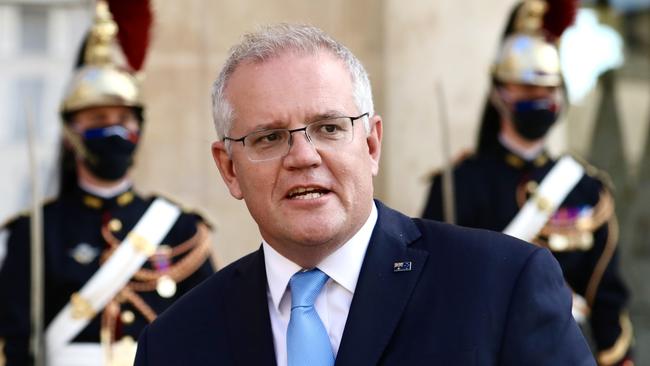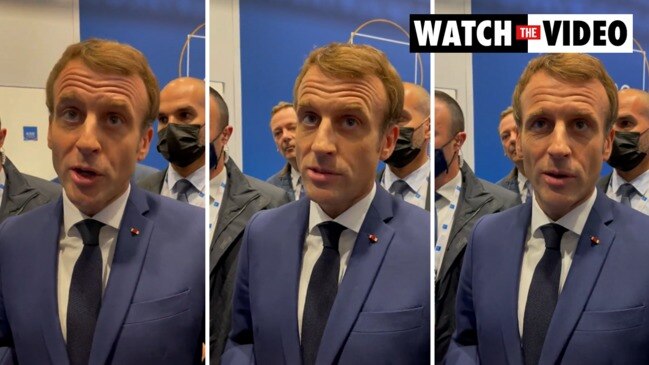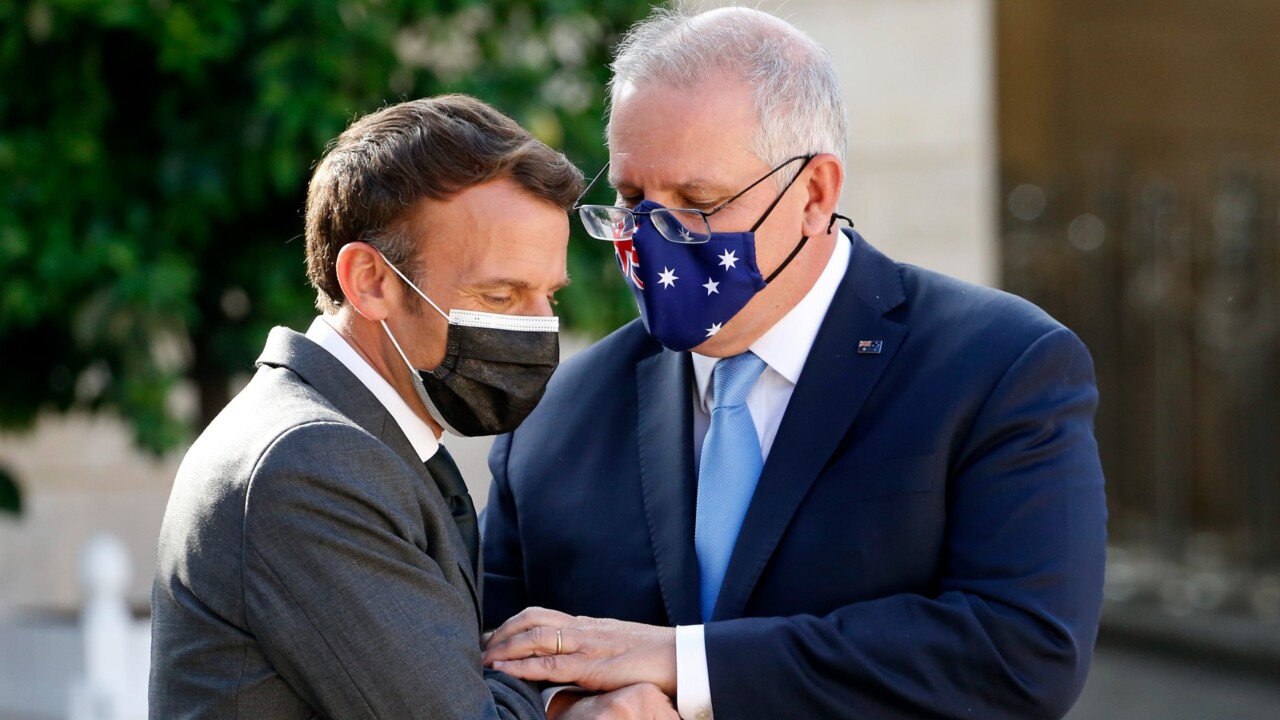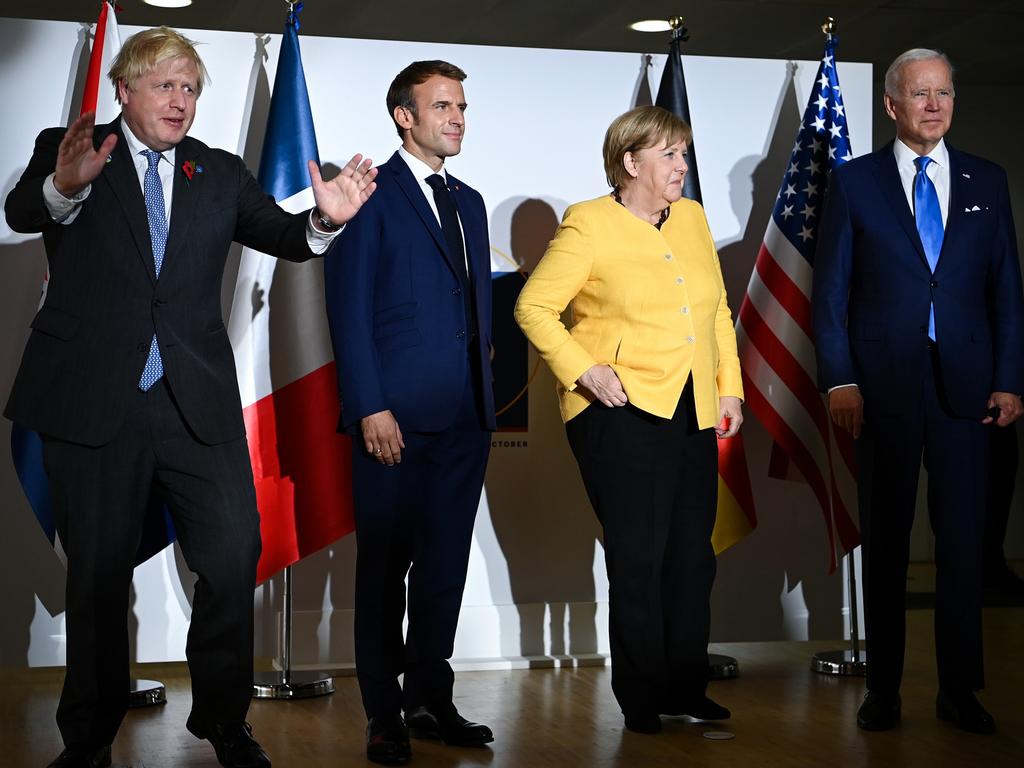Time for Prime Minister Scott Morrison to tell the whole truth on French submarine deal


The truth is simple. The French, in a masterful exercise in deceit, conned Australia in 2016 into signing a deal where they had no intention of delivering their undertakings. We ended up with a costly shambles and Australia had no alternative but to cancel the contract. Our mistake was not to do it earlier.
Instead of telling the full truth Morrison and Dutton effectively said that we changed our mind about the sort of submarine that was suitable for Australia and exercised our rights under the contract. While that’s true, it’s only part of the story.
I don’t know why Morrison and Dutton didn’t put the whole truth before the Australian people plus US President Joe Biden and UK Prime Minister Boris Johnson. I suspect that Morrison hoped the issue would fade away. But now the French President is accusing the Australian Prime Minister of misleading him and lying. These are serious allegations. Morrison can play the denial card but it will cast a pall over our AUKUS defence pact with the US and the UK.
I suspect that one of the reasons we did not tell the full truth was that the horrible facts would have shown that our top defence administration has for a long time been a shambles on the equipment front. We are stuck with the Joint Strike Fighter that is not performing at anything like the required level and the frigates contract is also a mess. We will have very little submarine defence for two decades. There is also the question of the role of current Foreign Affairs Minister Marise Payne, who was Defence Minister in 2016.
Given our PM is being declared a “liar” it’s important for all Australians to fully understand the French “con trick”.

We need to go back to 2014 when the deal had its origins.
Jean-Yves Le Drian is now France’s Foreign Minister but in 2014 he was Minister for Defence. He came to Brisbane in November 2014 with the then French President, Francois Hollande, for the G20 meeting and a head of state visit. Le Drian believed that the best submarine for Australia’s needs was nuclear and he planned to offer France’s Barracuda nuclear submarine and to offer a link with the French nuclear industry, including fuel rod production, a nuclear energy reactor, and a desalinisation plant in Australia.
Le Drian was right and a nuclear submarine was the correct solution for Australia. But Australia was adamant that we wanted a diesel electric submarine. We also wanted substantial industry around the submarine development and close involvement in the whole process.
Le Drian vowed that the French tender would meet the Australian requirements even though the legendary head of the French Naval industrial operation Hervé Guillou wanted a very different deal.
Le Drian appointed Marie-Pierre de Bailliencourt as effectively Guillou’s second in command. She brought a team together, including highly skilled Australians, to prepare and negotiate the bid. Hervé Guillou was sidelined while the negotiations took place.
The brilliant Mme de Bailliencourt understood that the tender process came out of a “nodding deal” between Australian Prime Minister Tony Abbott and Japanese Prime Minister Shinzo Abe with the backing of Americans. But in September 2015 Abbott was overthrown by Malcolm Turnbull.

The Japanese no longer had the inside running. The Germans were the front runners and were unofficially told they had won and boarded an aircraft for Australia to accept the prize. But on the day before Anzac Day, 2016, defence officials made a passionate plea to the National Security Committee (a group of top cabinet ministers) and explained the magnificence of the Bailliencourt proposal. Australia would be a regional submarine research and development hub in partnership with the French. Australian industrial content would be above 80 per cent. The estimated price of the French bid was between $20bn and $25bn in 2016 dollars, which was not much bigger than the German bid. The fact that Hervé Guillou’s people might not have the capacity to fulfil the Australian industrial development part of the dream was a detail for the future.
The defence officials held sway and on April 26 Malcolm Turnbull made the fateful announcement. But around the same time the real French deal was being announced in Paris.
Turnbull declared that all the submarines would be built in Australia (the de Bailliencourt proposal). But Francois Hollande’s office declared in the newspaper Le Monde that €8bn would be spent in France and some 3000 to 4000 people would be mobilised to build the first two in France, in keeping with Guillou’s plan.

Guillou wasted no time in dumping de Bailliencourt as his deputy. Almost all those who put the false French bid together were dismissed. The magnificent research development plan was converted to one where most activities took place in France.
Australian suggestions added to the cost. All 12 submarines were to be built in Australia but that boosted the cost. The 2016 French vision of Australian content proved difficult and costly. And it also became clear that the French plan for a massive diesel electric powered submarine was a very high risk development because it had never been done before. Not surprisingly the costs skyrocketed from the original estimate to around $150bn. Operational costs took the cost to $300bn — the most expensive non nuclear submarine project in world history. Defence officials desperately tried to conceal the cost blowout.
Scott Morrison, you have to tell the UK Prime Minister and the US President how we were conned. I suspect that President Macron doesn’t know what happened and in ignorance is doing great harm to our nation.






The decision by Prime Minister Scott Morrison and Defence Minister Peter Dutton to not tell the full truth about the French submarine disaster is backfiring on the nation.